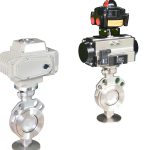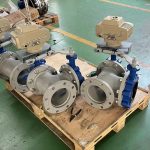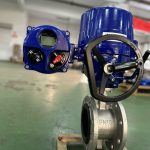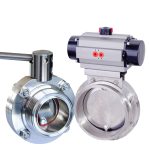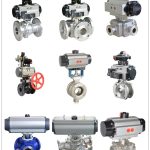Introduction:
Ball valves are an essential component in various industries and are use to control the flow of fluids in a system. They play a crucial role in regulating the movement of liquid or gas. Making them vital in industries such as oil and gas, water treatment, pharmaceuticals, and many more. Are ball valves directional?
Unlike other types of valves, ball valves have a spherical-shaped disc or “ball” inside that controls the flow of fluid. This design allows for quick and precise shut-off. Making them suitable for controlling high-pressure and high-volume flows.
It is essential to understand that not all ball valves are the same. Some are directional, while others are not. This distinction may seem insignificant. But it can greatly impact the performance and efficiency of a system.

In this document, we will delve into the concept of directional ball valve and provide a comprehensive understanding of their importance in different industrial applications.
I. The Working Principle of Ball Valves:
Ball valves consist of three main components: a ball, a body, and an actuator. The ball has a hole or port drilled through its center. And it is connect to the valve handle. Which controls its movement. The body of the valve is typically made of metal and houses the ball and other internal components.
When the handle of a ball valve is turn, the ball inside rotates, either partially or fully, to open or close the flow of fluid. This movement is what allows for precise control and shut-off. Ball valves also have an actuator that can be manual, electric, pneumatic, or hydraulic, depending on the system’s requirements.
The ball in a ball valve plays a crucial role in controlling fluid flow. When the valve is open, the hole or port in the ball aligns with the flow path, allowing fluid to pass through. On the other hand, when the valve is close, the ball rotates to block the flow path completely.
This design feature makes ball valves particularly effective for regulating high-pressure and high-volume flows. As the ball’s movement allows for quick and precise control. Additionally, because of its spherical shape, a ball valve can seal tightly against the valve body, preventing any leakage.
II. Understanding Directionality in Ball Valves:
Directionality refers to the ability of a valve to control fluid flow in a specific direction. In other words, it determines whether the valve can be install in any orientation or if it has a designated direction for proper functioning.
Most commonly used valves, such as gate valves and globe valves, are non-directional, meaning they can be install in either direction without affecting their performance. However, ball valves can be directional or non-directional, depending on their design and application.
Directional ball valves have an arrow indicator on their body, which indicates the direction of flow. This feature is particularly essential in applications where backflow prevention is crucial. For instance, in a check valve system, directional ball valves are use to ensure that fluid flows in one direction only.
III. Bi-directional Ball Valve:
Bi-directional flange ball valve have a unique design that allows for fluid flow in both directions. This makes them a versatile option for various applications. As they can be installed in any orientation without affecting their performance.
One of the main advantages of bi-directional ball valves is their ability to handle bidirectional flow, making them ideal for systems where fluid direction can change or vary. Additionally, they offer the same quick and precise shut-off as directional ball valves.
Bi-directional ball valves are also easy to install and maintain, making them a cost-effective option for many industries. Their design allows for easy access to internal components, reducing downtime and maintenance costs.
Another advantage of bi-directional ball valves is their high flow capacity. The spherical-shaped disc allows for the unobstructed flow of fluids. Making them suitable for high-pressure and high-volume systems.
IV. Uni-directional Ball Valves:
Uni-directional ball valves, also known as directional or one-way ball valves, are design to allow fluid flow in only one direction. They have an arrow indicator on their body that indicates the direction of flow and must be install accordingly for proper functioning.
These types of ball valves are commonly use for backflow prevention in applications such as check valve systems, where preventing fluid from flowing in the reverse direction is critical.

Uni-directional ball valves have similar design features as directional ball valves, such as a spherical-shaped disc for quick and precise shut-off. However, their uni-directional flow feature makes them a more suitable option for specific applications where backflow prevention is crucial.
Some uni-directional ball valves also come with additional features, such as spring-loaded discs, for added sealing and backflow prevention. This makes them ideal for use in systems with varying pressure differentials.
V. Factors Influencing Directionality:
The directionality of a ball valve is primarily determined by its design and application. Some key factors that influence the directionality of a ball valve include:
- System Requirements: The main factor in determining the directionality of a ball valve is the requirements of the system it is being used in. If backflow prevention is crucial, an inherently directional ball valve may be necessary.
- Fluid Type: The type of fluid being controlled can also play a role in the directionality of a ball valve. For instance, in some corrosive or abrasive applications, a uni-directional ball valve may be more suitable for preventing damage to the system.
- Pressure and Flow Rate: The pressure and flow rate within the system can also influence the directionality of a ball valve. In high-pressure and high-volume applications, bi-directional ball valves may be preferred for their ability to handle bidirectional flow.
- Installation Orientation: The orientation in which the ball valve will be installed can also determine its directionality. If the system has specific requirements, such as preventing backflow, then an inherently directional ball valve may be necessary.
Conclusion:
In conclusion, directionality refers to the ability of a valve to control fluid flow in a specific direction. While most valves are non-directional, ball valves can be directional or bi-directional depending on their design and application.
Directional ball valves have an arrow indicator that indicates the direction of flow and are used for backflow prevention. On the other hand, bi-directional ball valves can be installed in any orientation and allow for fluid flow in both directions.
The choice between directional or bi-directional ball valves depends on factors such as system requirements, fluid type, pressure and flow rate, and installation orientation. Both types have their advantages and are suitable for different applications. Additionally, the design of a ball valve may also include features. Such as spring-loaded discs for added sealing and backflow prevention.
In summary, understanding the factors that influence directionality is crucial in selecting the right ball valve for a specific application. Careful consideration of these factors will ensure optimal performance and efficiency in fluid control systems. So, it is important to carefully evaluate all aspects before choosing the type of ball valve best suited for a particular system.




